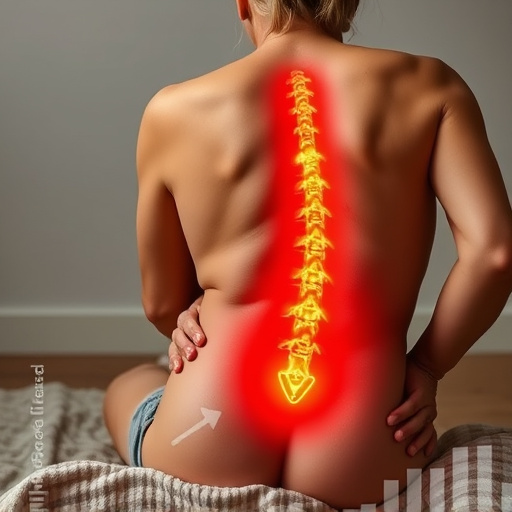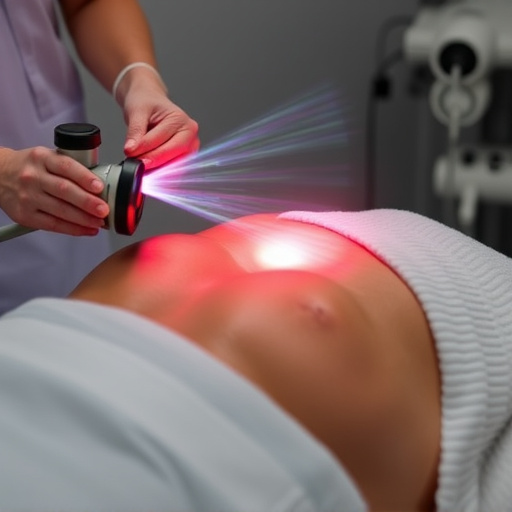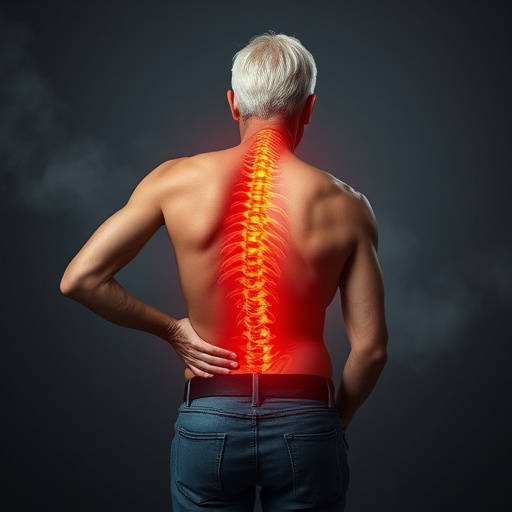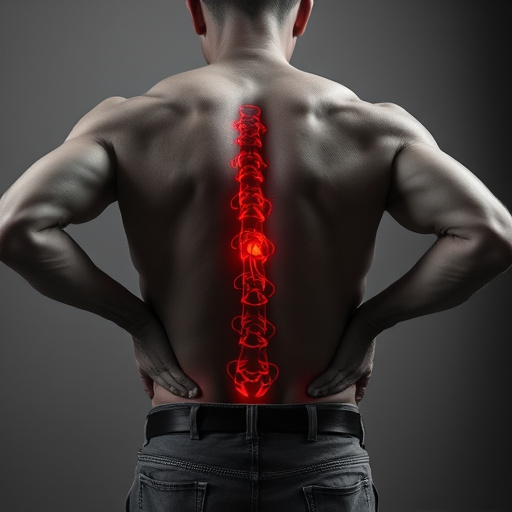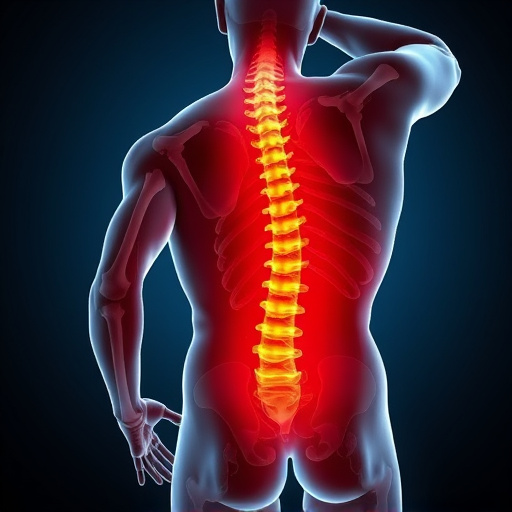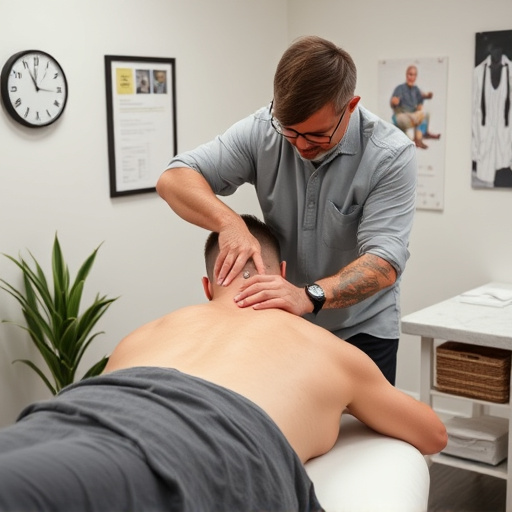Shockwave sports injuries therapy uses high-energy acoustic waves to stimulate healing in damaged tissues, effectively treating conditions like deltoid tendinopathy and muscle strains. Non-invasive and offering quicker recovery without surgical risks, it's an attractive alternative for auto accident victims and athletes seeking faster mobility and strength regain. Advanced technology enhances blood flow, accelerates tissue repair, and reduces inflammation, making it a powerful tool in modern rehab practices for managing pain from sciatica, lower back pain, and other musculoskeletal conditions.
In the realm of modern rehabilitation, shockwave therapy emerges as a game-changer for managing sports injuries. This innovative treatment, once confined to medical laboratories, is now integrated into rehab practices worldwide. Understanding shockwave therapy involves deciphering its role in accelerating healing and reducing pain associated with athletic traumas. The science behind its efficacy reveals a profound impact on tissue regeneration, making it a powerful tool in the quest for faster, more effective recovery from shockwave sports injuries.
- Understanding Shockwave Therapy for Sports Injuries
- The Science Behind Its Efficacy in Rehabilitation
- Integrating Shockwave into Modern Rehab Practices
Understanding Shockwave Therapy for Sports Injuries
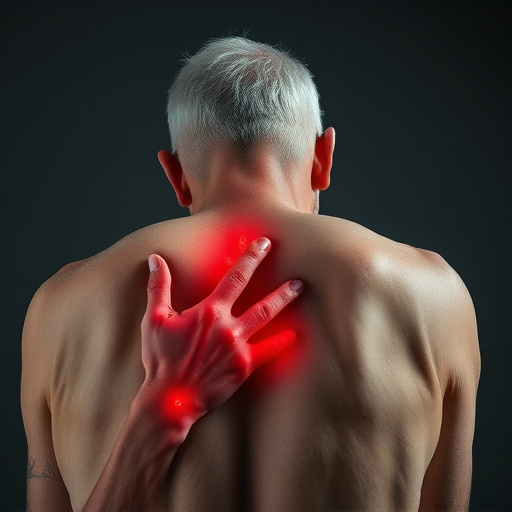
Shockwave therapy for sports injuries has emerged as a groundbreaking treatment option, revolutionizing the field of rehab services. This non-invasive procedure utilizes high-energy acoustic waves to stimulate healing and repair in damaged tissues, especially in cases where traditional methods have shown limited success. By delivering focused shockwaves to affected areas, such as muscles, tendons, and ligaments, this therapy promotes the growth of new blood vessels, accelerates tissue regeneration, and reduces inflammation, all of which are vital for effective injury rehabilitation.
Sports-related injuries often leave athletes with prolonged recovery periods and decreased performance potential. In such scenarios, shockwave therapy offers a promising solution. It has been particularly successful in treating conditions like deltoid tendinopathy, patellofemoral pain syndrome, and muscle strains, enabling athletes to regain mobility and strength faster. Moreover, its non-surgical nature makes it an attractive alternative for auto accident recovery, providing patients with a quicker path to healing without the risks associated with more invasive procedures.
The Science Behind Its Efficacy in Rehabilitation
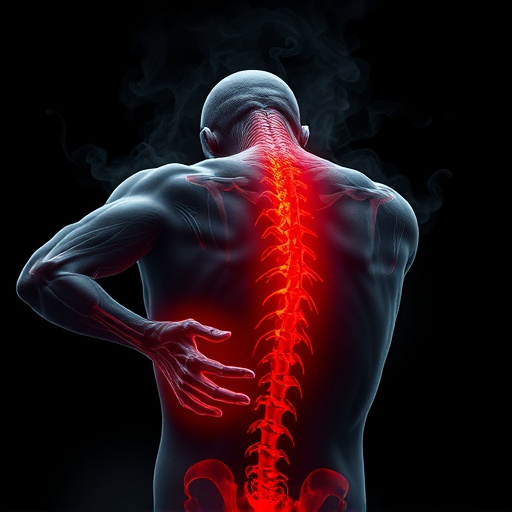
The science behind shockwave therapy for sports injuries is grounded in its ability to stimulate healing at a cellular level. Low-energy extracorporeal shockwaves (LES) are delivered to injured tissues, creating micro-tears in the damaged areas, which then trigger a cascade of beneficial biological responses. This process enhances blood flow and nutrient delivery to the site, promoting tissue repair and regeneration. Shockwave therapy has been found particularly effective for conditions like chronic back pain, with studies showing significant improvements in pain relief and functional abilities among patients undergoing this non-invasive treatment.
By targeting specific areas of the body affected by sports injuries, shockwave therapy offers a safe and efficient alternative to more invasive procedures. Its non-invasive nature makes it an appealing option for athletes seeking back pain relief without the risks associated with surgery. The technology continues to evolve, providing rehabilitation professionals with a powerful tool to address various musculoskeletal conditions, including lower back pain, and accelerate the recovery process.
Integrating Shockwave into Modern Rehab Practices

In modern rehabilitation practices, integrating shockwave sports injuries treatments has emerged as a game-changer. Shockwave therapy for pain, particularly targeting conditions like sciatica and lower back pain, offers non-invasive alternatives to traditional interventions. By utilizing focused acoustic waves, this technology stimulates tissue regeneration and promotes healing in damaged muscles, tendons, and ligaments commonly associated with sports injuries.
Rehab centers are increasingly adopting shockwave therapy as part of their comprehensive treatment plans. Its effectiveness lies in its ability to enhance blood flow, reduce inflammation, and encourage the body’s natural healing processes. As a result, athletes and active individuals can experience faster recovery times and improved performance without the side effects often associated with surgical procedures or prolonged medication use.
Shockwave therapy for sports injuries has emerged as a powerful tool in modern rehabilitation, offering non-invasive solutions with proven efficacy. By leveraging scientific advancements, healthcare professionals can now integrate this innovative approach into their practices, enhancing recovery outcomes for athletes suffering from various active lifestyle-related ailments. As research continues to uncover the full potential of shockwave therapy, its role in sports medicine is poised to revolutionize the way we address and prevent injuries in today’s active population.
